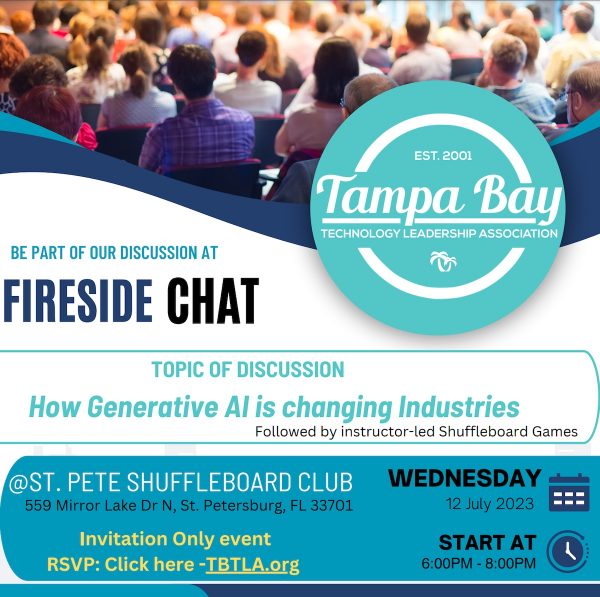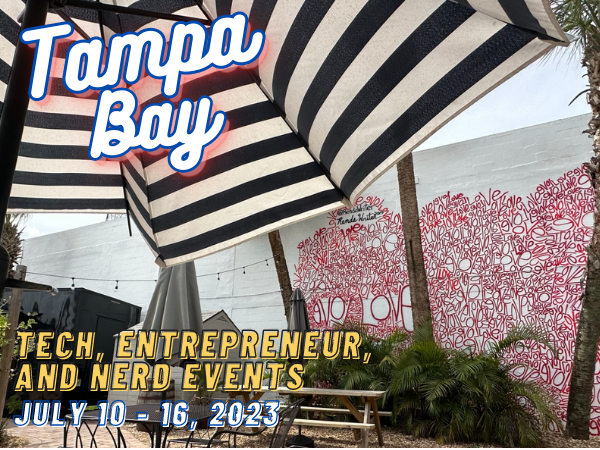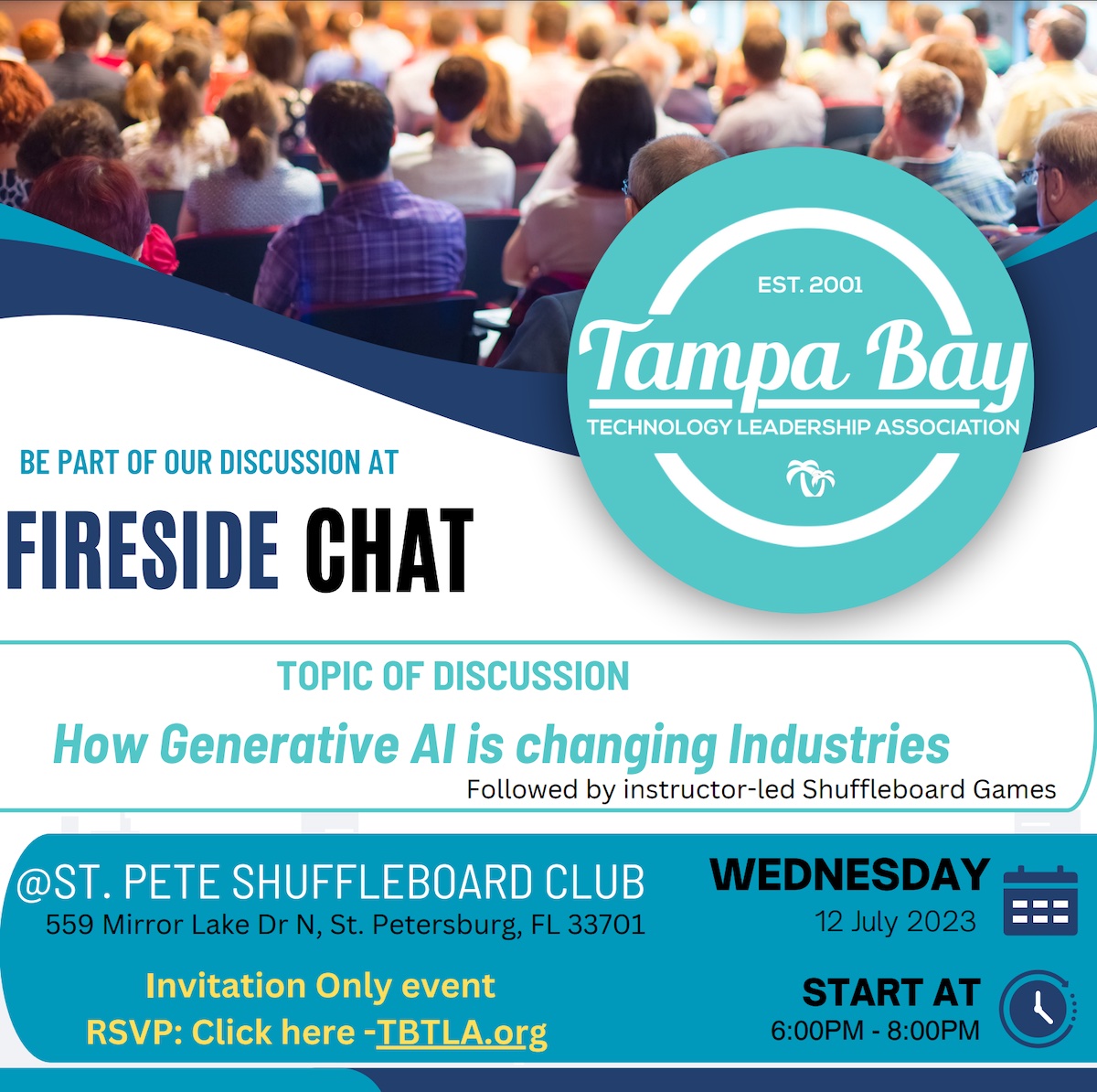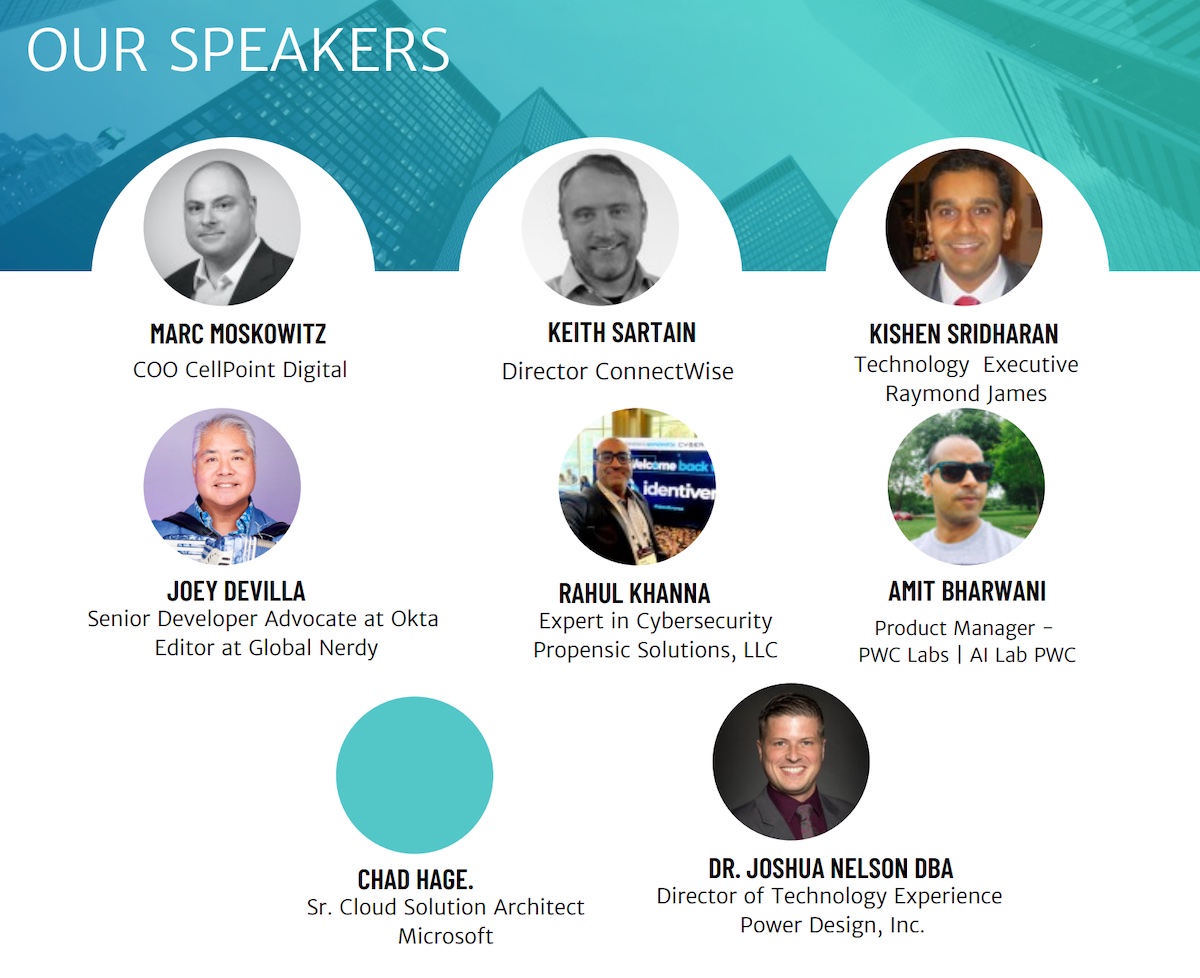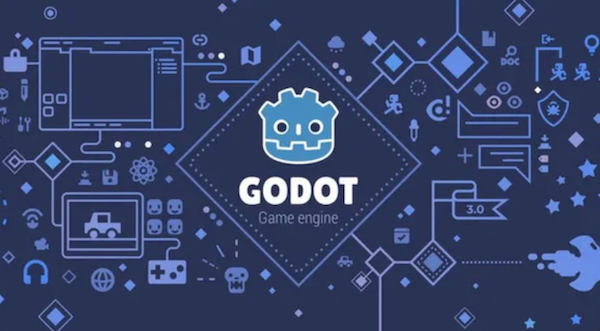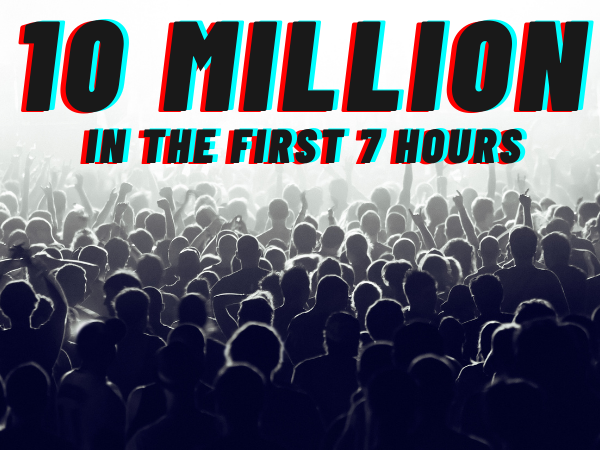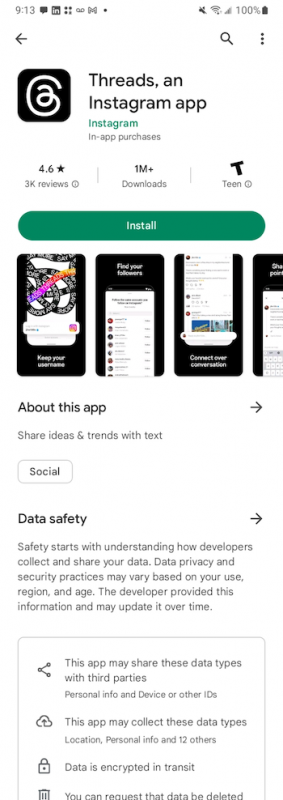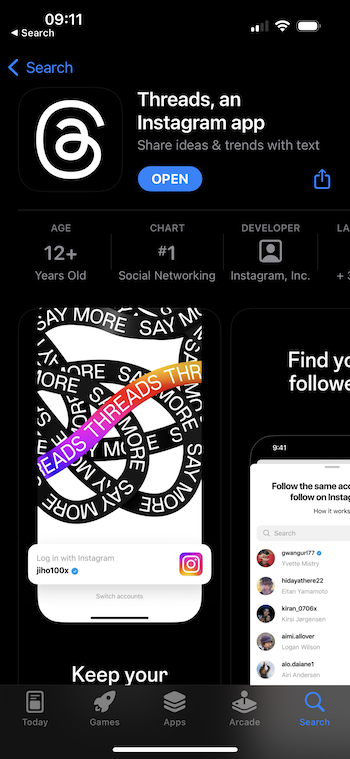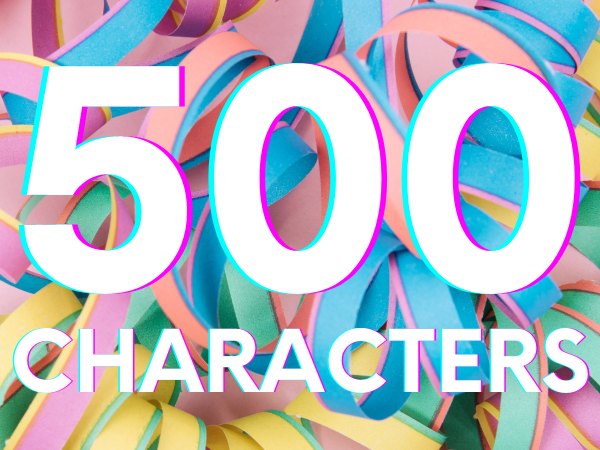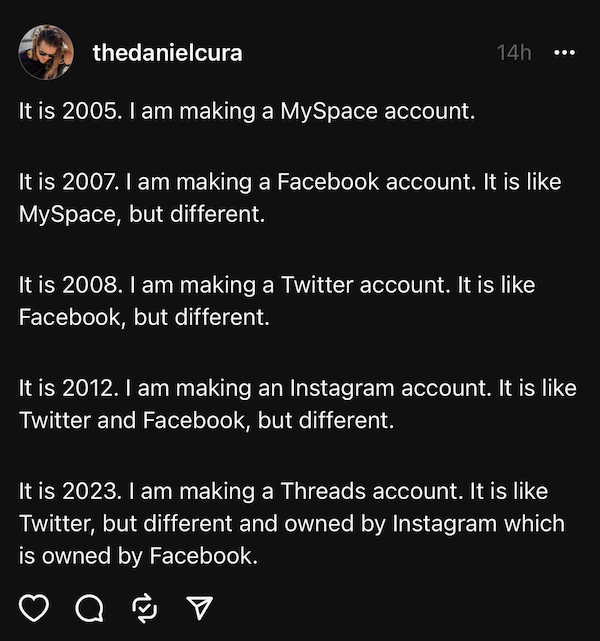Tampa Bay Technology Leadership Association’s (TBTLA) AI Fireside Chat happens tomorrow (Wednesday, July 12th, 2023) at 6:00 p.m. at St. Petersburg Shuffleboard Club, and I’ll be speaking there! It’s free to attend, and it’s not only a great way to learn more about AI, but also to socialize with local tech people and play some shuffleboard. Go ahead and register here.
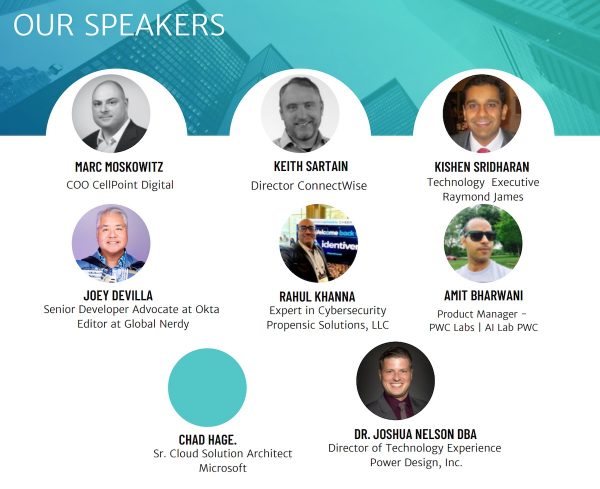
Here are all the speakers:
- Amit Bharwani: Product Manager at PWC Labs and the AI Lab at PWC
- Joey deVilla: Senior Developer Advocate at Okta and organizer of the Tampa Bay Artificial Intelligence Meetup
- Chad Hage: Senior Cloud Solution Architect at Microsoft
- Rahul Khanna: Cybersecurity Expert at Propensic Solutions
- Mark Moskowitz: COO at CellPoint Digital
- Joshua Nelson: Director of Technology Experience at Power Design
- Keith Sartain: Director of IT at ConnectWise
- Kishen Sridharan: Technology Partnerships Executive, Office of Technology Innovation at Raymond James
For those of you who are planning to attend — or if you’re just curious — here are some questions and answers that should give you some useful background information for the fireside chat.
What is AI?
AI is short for artificial intelligence, a catch-all term for giving machines the ability to perform tasks that require intelligence — itself a catch-all term referring to the abilities of problem-solving, discernment, and judgment.
What is generative AI?
Generative AI is a broad category of AI whose purpose is to generate new content, which could be in the form of text, images, audio, video, code, and anything else we would classify as a “creative work” if it were made by a human. Here are a few examples:
- Text generative AI: Bard and ChatGPT
- Image generative AI: DALL-E, Lensa, Midjourney, and Stable Diffusion
- Audio generative AI: Beatoven, Mubert, and Musico
- Video generative AI: DeepBrain, Pictory, Synthesys
- Code generative AI: ChatGPT Plus’ Code Interpreter, GitHub Copilot
If there is generative AI, is there also non-generative AI?
Yes, and it’s used in more places than you might think. This kind of AI is often called discriminative AI, because it can discriminate between similar things. Some examples include:
- Face recognition, often used in border and retail security
- Object recognition — you might pass through one of these systems if you take a toll road to St. Pete Shuffleboard Club
- In email, with spam detection and GMail’s suggestions
- Music identification, such as the Shazam app, or the copyrighted music detection system in YouTube
- In banking, which includes fraud and money-laundering
What’s with the recent boom in AI? What changed?
It’s a combination of a number of things:
- We started working backwards. AI has been a branch of computer science from the very beginning. Programming the early versions of AI was about coming up with all the rules of whatever field an AI program was working in, with the goal of having the AI apply those rules to come up with answers. The problem was that it’s very hard to come up with all the rules for a real-world situation unless you’re working in a field or dealing with a very limited set of situations.
These days, the tendency is to program AI backwards using machine learning. We provide AI programs with a lot of real-world examples of answers, with the goal of having the AI analyze those answers to come up with the rules for finding future answers. - The explosion in machine-readable data. Over the past 30 years, the amount of machine-readable data in the world has exploded thanks to the internet and the digitization of everything. This readily-available trove of information about anything and everything gives us the necessary data to train machine learning algorithms.
In fact, the two things listed above — machine learning and readily-available data to feed machine learning — are the primary drivers behind the current AI explosion.
- Faster computers. If you were around in the 1980s and were into computers, you may remember what was the world’s most powerful computer of the time: the Cray mainframes, like the one pictured above. It could perform 1.9 billion floating-point operations per second, which makes it about as powerful as…an iPad 2. These faster computers let us perform more machine learning on more data in less time.

- The cloud. A limiting factor in high-powered computing is the cost of purchasing, and even more importantly, maintaining a lot of computer hardware. Cloud computing lowers the barrier to access the kind of computer power needed to do the kind of big data processing that present-day machine learning requires.
What’s a “model,” when speaking in terms of AI? I keep seeing this term all the time.
In AI, a model is the computer equivalent of a mental model you’d have in your mind — an understanding of some topic that allows you to find patterns and make predictions.
If you’ve lived in Florida for a little while, you’ve probably build a mental model about the weather. If you notice that the sky is cloudy and greenish-grey, the wind is increasingly gusty and picking up in speed, and the birds have suddenly become silent, your mental model will suggest to you that it’s time to seek shelter very, very soon. That’s because you’ve seen these signs before and have noticed that they generally appear shortly before a hurricane.
AI models are similar in that they allow computers to make predictions and choose courses of action based on the available evidence. An AI model for weather would compare the current conditions to the historical weather record that it was trained on, note the sudden change in air pressure, temperature, and other factors, and say that there is a high probability that there will be a hurricane.
Here’s another term I see all the time: application. What’s that?
It’s a computer program that uses one or more models as its underlying “engine.” For example, ChatGPT is an application, and it’s based on the GPT-3 or GPT-4 model, depending on which version you’re using.
